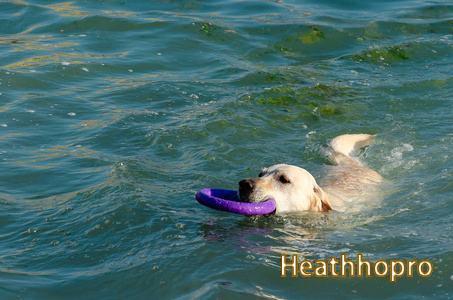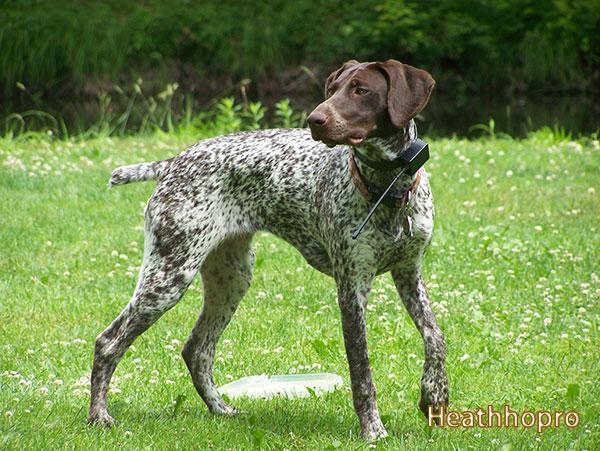Do you understand the dog’s sense of smell?
We all know that dogs have a strong sense of smell, but do you know how far dogs can smell? Can dogs really smell as far as people say, or is it just a little better than human nose.
In the past decade or so, many scientists have been studying this problem, trying to find a definitive answer.
In this article, we can see the research on how far dogs can smell, comparing the dog’s sense of smell with human’s. I believe you will have a better understanding of dog’s sense of smell after reading this article.
The sense of smell in dogs
If you are concerned about the olfactory aspect of dogs, then you must have heard of the reputation dogs have gained for “detecting odors to parts per trillion” or “detecting chemicals in solutions diluted to parts per trillion to two.
These terms are relatively easy to understand for scientists who study this area, but for ordinary people like us who do not know much about this area, they, relatively speaking, not particularly forced to understand. So, we need to learn about odor terms before understanding how far dogs can smell.

Let’s take “one in a thousand” as an example, it can be understood that there is an odor, it is mixed with a thousand other particles of smell, and diluted.
For example, a dog can identify one sugar in a thousand salt grains or find one rotten orange in a thousand fresh oranges.
Dog’s sense of smell vs human’s sense of smell
A dog’s sense of smell is very different from a human’s. Dogs have a much stronger sense of smell than humans, and they can pick up many scents that humans cannot. A dog’s nose is made up of two separate parts that help them identify odors more accurately. Dogs have a large number of pores inside their nose that can capture more scent molecules, which allows them to pick up many scents that are difficult for humans to detect.
Dogs have a more sensitive sense of smell than humans, and they can pick up more odors, which allows them to pick up many odors that humans cannot. Dogs have a more refined sense of smell than humans, they can capture smaller odor molecules, which allows them to smell many odors that humans cannot. In addition, a dog’s sense of smell can detect more odors, such as proteins and sugars, than a human’s sense of smell cannot.

Dogs’ sense of smell can also help them identify odors more accurately. They can extract many different odors from one odor, which allows them to more accurately identify the source of the odor. In addition, dogs’ sense of smell can also help them to remember odors, they can remember many odors, while human sense of smell cannot do that.
In short, dogs’ sense of smell is much more powerful than human’s, and they can detect many odors that humans cannot. They can extract many different odors from one odor, which allows them to identify the source of the odor more accurately, and in addition, they can remember many odors, which human sense of smell cannot do. Therefore, dogs’ sense of smell is in many ways more sensitive than humans’ sense of smell, and they can help them identify odors more accurately.
How far a dog’s sense of smell goes
A dog’s sense of smell is its most acute sense and is much sharper than that of humans. Dogs have over 300 scent receptors in their noses compared to only 5 in humans. This means that dogs can detect more and finer scents than humans. Dogs have capillaries in their noses that allow them to detect smaller odor molecules than humans. In addition, dogs have more olfactory cells in their noses, which can detect more odors.
Dogs can smell farther than humans. Some studies have shown that a dog can smell odors up to 20 km away, while humans can only smell a few meters away. This is because the nerves in a dog’s nose can capture smaller scent molecules, so they can smell over longer distances.

In addition, dogs have a special ability that allows them to identify scents at great distances. Dogs can identify their owners or other animals by scent, and can even track prey by scent.
So, as you can see from the above, dogs can smell up to very impressive distances, even up to 20 km away. They can detect more and finer scents than humans, and have a special ability that allows them to identify scents at great distances.
How Jacobson’s Organ Influences a Dog’s Sense of Smell
Jacobson’s organ, also known as the vomeronasal organ, is a small organ located in the nasal cavity of dogs and other animals. It is connected to the main olfactory system and is responsible for the detection of pheromones. Pheromones are chemical signals that are used to communicate between animals of the same species. They can be used to identify friends, enemies, and potential mates.

Jacobson’s organ is made up of two small sacs, each containing a few dozen sensory cells. These cells contain receptors that can detect pheromones. When a dog inhales, the air passes over these cells and the pheromones are detected. The information is then sent to the brain, which interprets the signals and helps the dog identify the source of the pheromone.
The information that is sent to the brain is then processed and used to help the dog understand its environment. For example, if the dog smells a pheromone that is associated with danger, it will be more alert and aware of its surroundings. Similarly, if the dog smells a pheromone that is associated with food, it will be more likely to search for food.

Jacobson’s organ is an important part of a dog’s sense of smell. It helps them to identify other dogs and even other animals. It can also help them to know when they are near food, potential mates, and potential danger.
The information that the Jacobson’s organ provides can be invaluable to a dog’s survival. When two dogs meet, they will often sniff each other’s faces, which is a way of exchanging pheromones and communicating with each other.
Overall, Jacobson’s organ is a crucial part of a dog’s sense of smell. It helps the dog to detect and process odors in its environment, as well as to recognize and communicate with other dogs. This organ is an important part of a dog’s overall sensory system and helps to keep them safe and aware of their surroundings.


